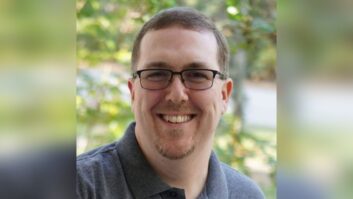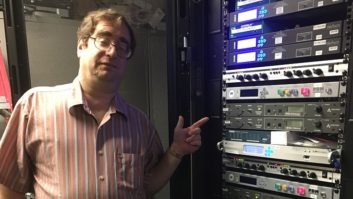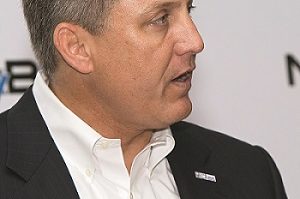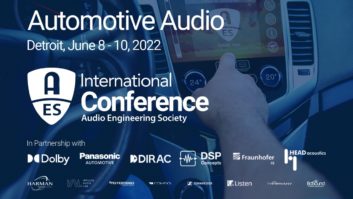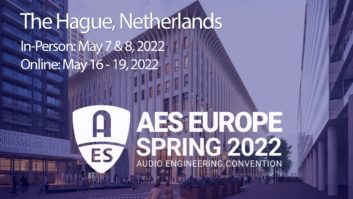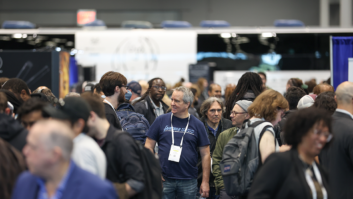Each year about this time I check in with David Bialik to see what he is planning for broadcast sessions at the Audio Engineering Society convention, to be held this fall in New York.
It’ll be more than usually good to see him there, given that he was hospitalized and missed the San Francisco show. This is roughly equivalent to Noah missing a boat departure; it just doesn’t happen.
(That didn’t keep Bialik from doing his beloved AES work. He got more than 100 calls to his cell phone from attendees looking for room numbers and asking other convention questions. He answered using his notes and program materials. Many never realized he was 3,000 miles away in a hospital bed.)
A highlight this October will be a discussion of technical contributions of the Radio Corporation of America. If you think the letters RCA refer only to a connector, it’s time to brush up on your history. Clifford Rogers, who was a sales manager for RCA Broadcast, and engineer Hans Dietza are among the speakers. Rogers is digging through boxes of old paperwork and told Bialik it’s the most fun he’s ever had. Fred Barnham of L3 Communications is co-organizing.
Streaming
More in keeping with our times, two sessions will delve into aspects of streaming; indeed, the entire track now is called Broadcast/Media Streaming Sessions.
One will explore audio processing for Internet streaming. “You can’t go into an office without finding at least one person listening. … It’s the growing medium,” Bialik said.
Awareness of the need for proper processing is growing, he believes, particularly given the range of hardware on which people might be listening, from cheap plastic speakers to high-end stuff.
Separately, Raymond Archie, director of streaming operations for CBS Radio, will moderate a discussion about streaming playback and distribution.
Encoding and stream delivery, Bialik says, are important factors affecting a distribution strategy, given the range of “connected” devices available including Internet radios, mobile phones and IP-enabled televisions, set-top boxes and mobile Linux devices, all of them potential “radios.”
“A lot of people think, ‘I’ll set up a streaming server, and that’s it,” Bialik said. “But there are a lot of different ways to do playback; and you have to worry about how you’re distributing your audio, about having enough bandwidth. As with a podcast, if you don’t manage your distribution well you can overwhelm your system easily.” Participants include speakers from Intel, Reciva, vTuner and StreamTheWorld (all panels are still being finalized).
A two-part session will explore digital audio networking. Neil Glassman will moderate a panel about the studio side that includes representatives of Axia, Harris, Logitek and Wheatstone. Then David Prentice of Dale Pro Audio heads a session on the use of IP audio beyond the studio including codecs and STLs. Representatives of APT, Comrex, Musicam USA, Source Elements and Telos Systems are among participants.
Radio World’s Skip Pizzi will host a session on “Audio for Newsgathering” and talk with working professionals about current and future options for audio field recording and backhaul — as the AES marketing folks put it, “from EV-DO to BGAN, AMR-WB to HE-AAC, CF to SDHC.”
Fatigue
Listener fatigue and longevity will be taken up by a panel that includes Ellyn Sheffield, Andy Butler, JJ Johnston, Ted Ruscitti and Sam Berkow.
“It used to be a topic no one wanted to touch,” Bialik said; but in fact radio has been trying to increase longevity for a long time, as hinted by a slogan well known to New York listeners: You give us 22 minutes, we’ll give you the world.
“There was a time people would listen no matter how much noise and static was on the line. You’d listen to ‘Mystery Theater’ even if the reception was lousy. Now we’re promising digital quality, clean sound; but we need to make the sound enjoyable and exciting.”
The AES agenda includes a facility case study session, in which design and system integration specialists will scope out a hypothetical media environment and talk about variables like site selection, planning, construction, integration, acoustics, HVAC, furniture, equipment selection and aesthetics.
Other panels will discuss innovations in digital broadcasting; developments in mobile TV; the “lip sync issue,” which has become more pronounced with today’s huge TV screens; and loudness and audio processing for broadcast. Another will focus on sound effects.
For the first time, a Society of Broadcast Engineers Certification Exam session will be conducted at the convention. In the past, exams have been held in New York through SBE Chapter 15, which will help in administering this one. (AES registration, while recommended, is not required, nor is SBE membership. Info on exams is at www.sbe.org.)
Even in a challenging economy, Bialik believes engineers and managers should attend. “AES is the show if you care about audio and the art of producing and transmitting good audio to the public.” Visit www.aes.org/events/127.
Bialik, meanwhile, is feeling fine after last year’s car accident and health issues.
Ever the engineer, he puckishly has replaced most of the phones in his house with older rotary-dial models to cut down on his 11-year-old daughter’s use of the phone. (“She and her friends sit around trying to figure out how to use them.”)
He also relates that in the course of last year’s hospital stays, a health care worker asked what he thought his life expectancy might be. He said 78 years. Asked why, he replied: “I’ve lived up to every record speed so far, and that’s the last one!”





